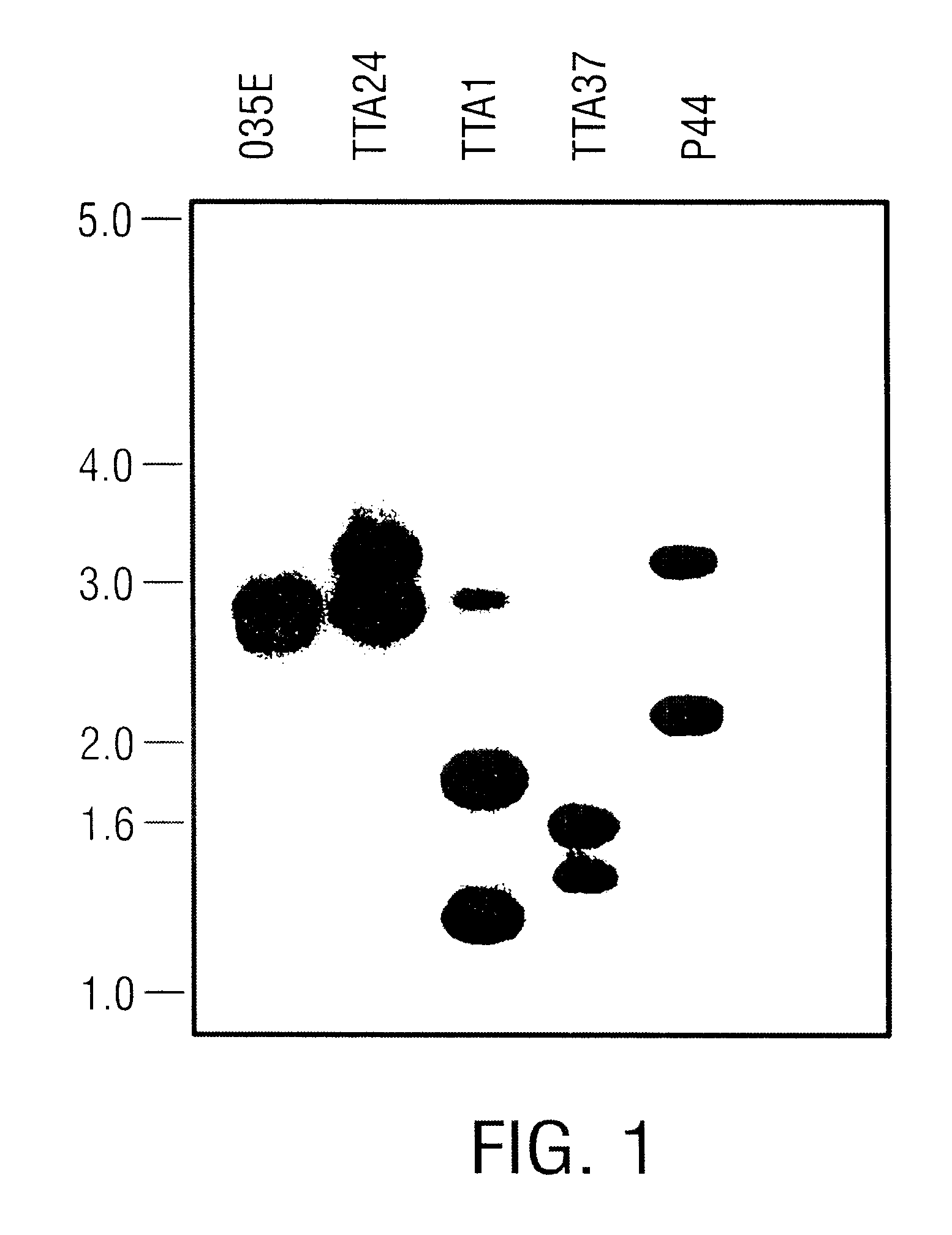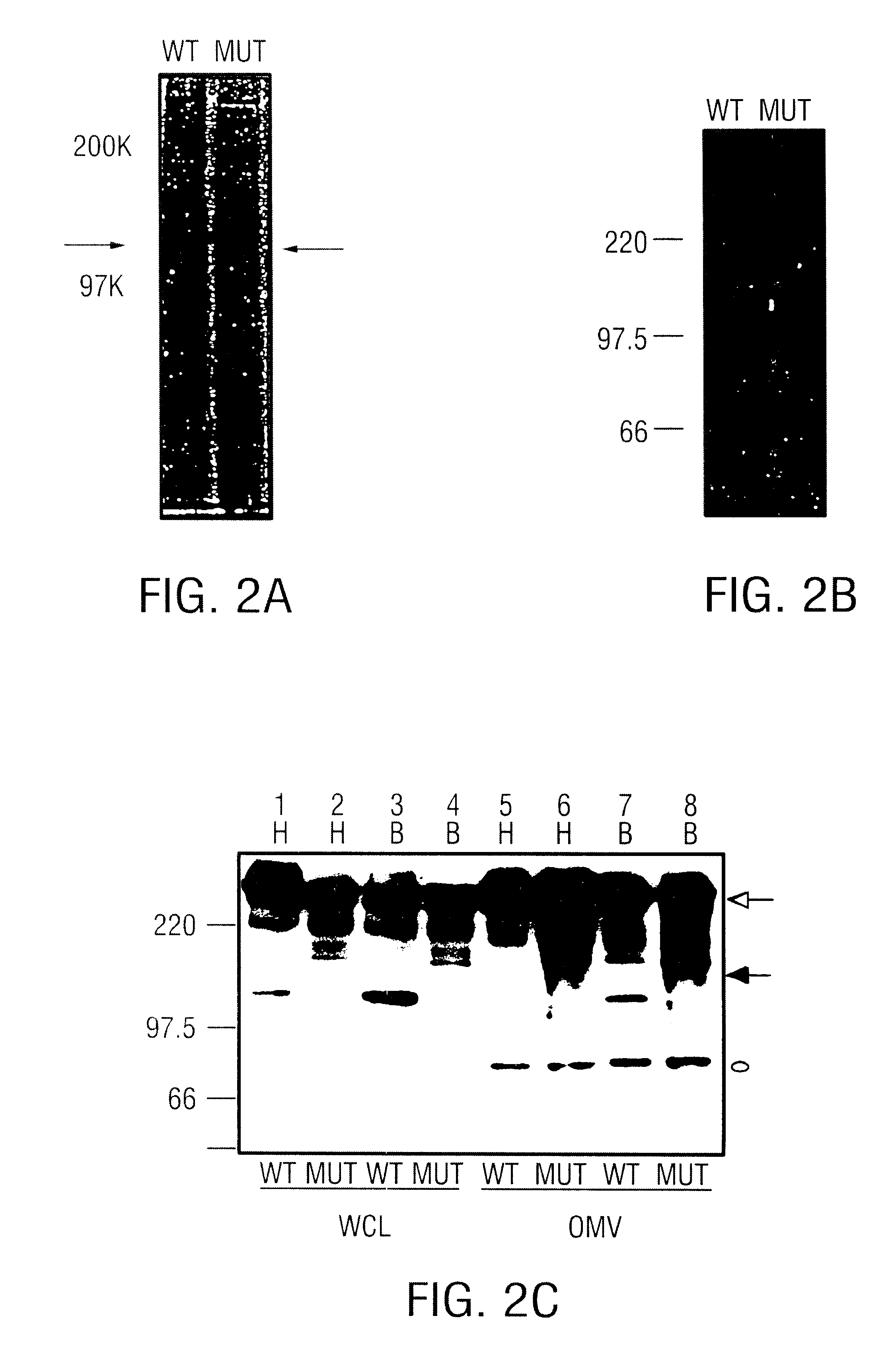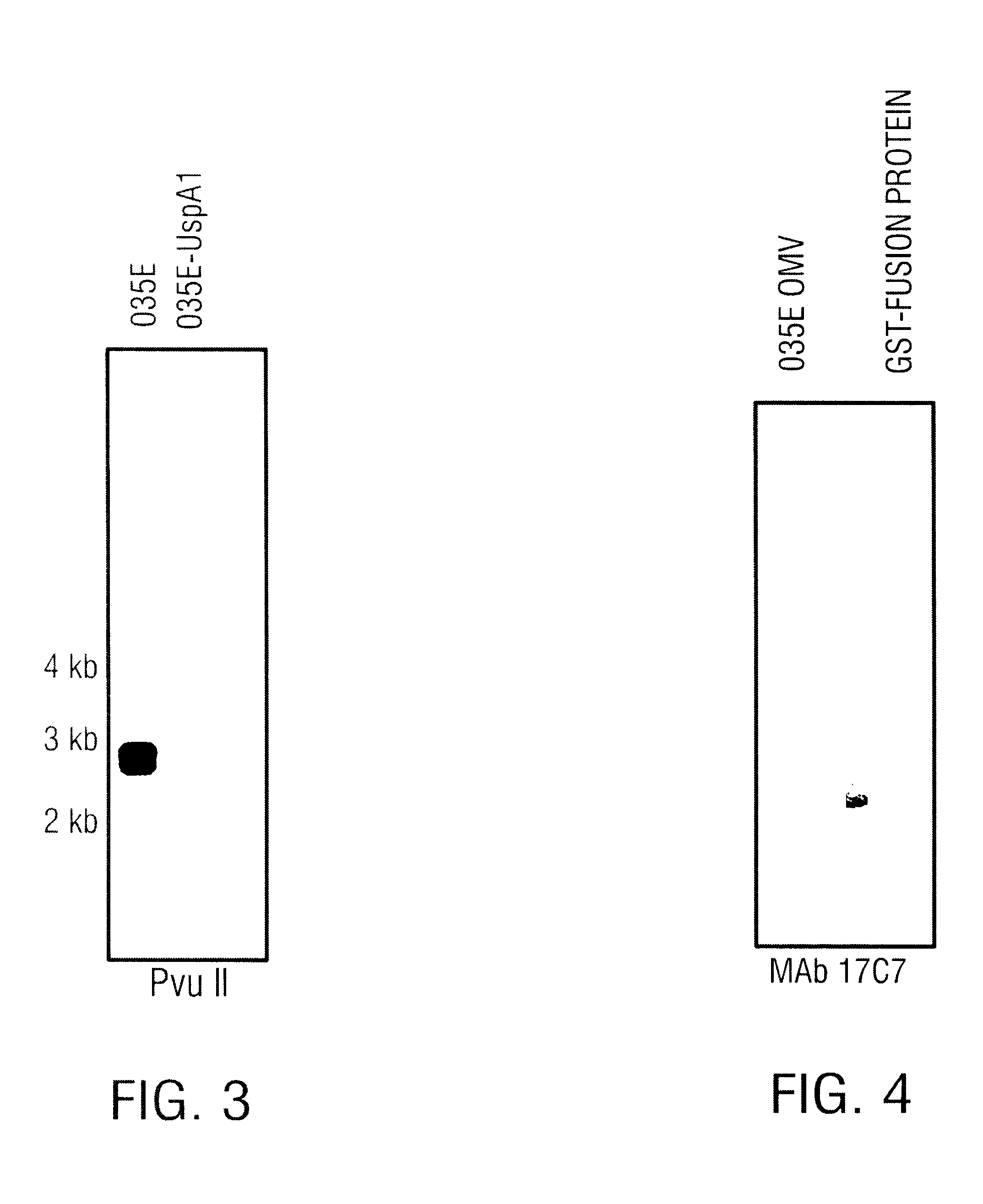USPA1 and USPA2 antigens of Moraxella catarrhalis
a technology of moraxella catarrhalis and antigens, which is applied in the field of microbiology and clinical bacteriology, can solve the problems of troublesome, no indication of similar progress made with respect to m. catarrhalis, and general failure of the outer membrane of this organism to use detergent fractionation of cell envelopes
- Summary
- Abstract
- Description
- Claims
- Application Information
AI Technical Summary
Benefits of technology
Problems solved by technology
Method used
Image
Examples
first embodiment
In a first embodiment, the present invention provides for the identification of the proteins UspA1 and UspA2 from M. catarrhalis strain O35E. The UspA1 protein comprises about 831 amino acid residues and has a predicted mass of about 88,271 daltons (SEQ ID NO:1). The UspA2 protein comprises about 576 residues and has a predicted mass of about 62,483 daltons (SEQ ID NO:3). UspA2 is not a truncated or processed form of UspA1.
second embodiment
In a second embodiment, the present invention has identified the specific epitope to which MAb 17C7 binds. A common peptide sequence, designated as the "3Q" peptide, found between amino acid residues 480-502 and 582-604 of the UspA1 protein (SEQ ID NO:1 and residues 355-377 of the UspA2 protein (SEQ ID NO:3) of M. catarrhalis strain O35E, encompasses the region which appears to be recognized by MAb 17C7. (Note that numbering of the amino acid residues is based upon strain O35E as provided in SEQ ID NO:3.) It is envisioned that this region plays an important role in the biology of the pathogen and, from this information, one will deduce amino acids residues that are critical in MAb 17C7 antibody binding. It also is envisioned that, based upon this information, one will be able to design epitopic regions that have either a higher or lower affinity for the MAb 17C7 or other antibodies. Further embodiments of the present invention are discussed below.
In another preferred embodiment, the...
example i
Sequence Analysis and Characterization of uspA1
Bacterial strains and culture conditions. M. catarrhalis strains O35E, O46E, TTA24, 012E, FR2682, and B21 have been previously described (Helminen et al., 1993a; Helminen et al., 1994; Unhanand et al., 1992). M. catarrhalis strains FR3227 and FR2336 were obtained from Richard Wallace, University of Texas Health Center, Tyler, Tex. M. catarrhalis strain B6 was obtained from Elliot Juni, University of Michigan, Ann Arbor, Mich. M. catarrhalis strain TTA1 was obtained from Steven Berk, East Tennessee State University, Johnson City, Tenn. M. catarrhalis strain 25240 was obtained from the American Type Culture Collection, Rockville, Md. M. catarrhalis strains were routinely cultured in Brain Heart Infusion (BHI) broth (Difco Laboratories, Detroit, Mich.) at 37.degree. C. or on BHI agar plates in an atmosphere of 95% air-5% CO.sub.2. Escherichia coli strains LE392 and XL1-Blue MRF' (Stratagene, La Jolla, Calif.) were grown on Lubria-Bertani m...
PUM
| Property | Measurement | Unit |
|---|---|---|
| molecular weight | aaaaa | aaaaa |
| molecular weight | aaaaa | aaaaa |
| molecular weight | aaaaa | aaaaa |
Abstract
Description
Claims
Application Information
 Login to View More
Login to View More - R&D
- Intellectual Property
- Life Sciences
- Materials
- Tech Scout
- Unparalleled Data Quality
- Higher Quality Content
- 60% Fewer Hallucinations
Browse by: Latest US Patents, China's latest patents, Technical Efficacy Thesaurus, Application Domain, Technology Topic, Popular Technical Reports.
© 2025 PatSnap. All rights reserved.Legal|Privacy policy|Modern Slavery Act Transparency Statement|Sitemap|About US| Contact US: help@patsnap.com



